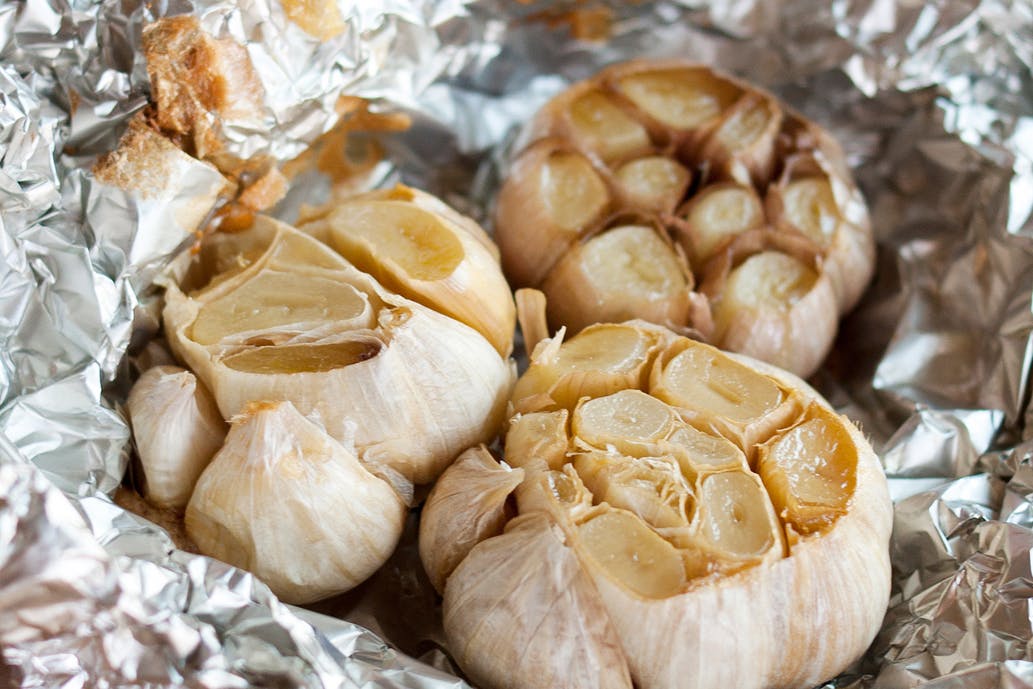Without being too technical or debating the botanical aspects of this ingredient, I want you to consider the many faces of garlic. And I don’t mean the garlic powder you get from the shelf of your mother’s kitchen, but rather the plant, bulb and clove itself, up close and personal.
I can’t think of many ingredients that grow and morph over a period of time, both in the field and in the kitchen. The tomato may be green for a bit, and present us with fried green tomatoes and their tart bite mixing with the sweet cornmeal crust. The potato is solidly a growing entity sometimes prized when smaller, but for the most part consumed, fully grown in a variety of ways.
Squash may give its blossoms up to be stuffed and fried but for most preparations it’s the adult vegetable we use. Peppers, in particular chilies, come close to garlic in their versatility. Dried, smoked, powdered, fresh, and still garlic remains multipurpose from plant to powder.
When we get garlic into the kitchen we see how much more it changes just under heat. Take a spoonful of raw garlic from a mature clove and taste it. Hot, spicy, overbearing almost to a fault. Many a dish has been ruined by too much raw garlic, so much so that there is a slew of home remedies and pills to offset the lingering effects of eating raw garlic.
Now take a bite of green garlic or garlic scapes and the flavor profile changes. Grassier, less overtly aggressive yet it still lingers on the palate, more scallion than garlic it carries a softer kick. Take the raw garlic and give it a quick sauté. The garlic loses a bit of the bite and takes on some sweetness.
The green garlic becomes almost floral, closer to its connection with the young grassiness yet still obviously garlic. Both ages never give into the heat enough to cancel out the bite, just to soften it in subtly different ways.
Now take the chopped garlic and slowly brown in oil or butter. This is toasted garlic, one of my favorite additions to compound butters or cream sauces. Nutty, rich and sweet it still has a background of garlic, but now that garlic is an underlay to other flavors, not the upfront, in your face profile of fresh garlic.
Toasted garlic is not as effective with scapes or green garlic, but roasting or grilling those two yields a smoky, sweet garlic good in salsas and cream soups. Speaking of smoked garlic, the mature bulb can be smoked or roasted, producing the same sweetness but more moisture, as the skins of the cloves and the concentrated mass of a full head retain moisture and heat , steaming the garlic and creating the moist sweet flavor that works well on crusty bread or as part of a mayonnaise.
We have not even mentioned the ways that other cuisines use garlic; fermented, pickled, as part of relishes and hot sauces. In all cases the intrinsic nature of garlic is evident. Sometimes the sweetness prevails, at other times we require the garlic first bite to set against other strong but complimentary flavors like ginger, onion and chilies.
The younger garlic plant gives us the fresh grassiness of the plant, the more mature bulbs and cloves gives us garlic at its most powerful, still with versatility but never shying away from the mineral, terroir centered qualities of premium garlic.
Failing all this there is garlic powder, and fair warning: this is my least favorite way to consume it. Do yourself a favor and use fresh when you can. If powder is needed buy it from a garlic producer, they know their product best and will no doubt have taken the same care with the dehydration process as they did with planting the initial bulb.
Under no circumstance will you need to purchase garlic salt. Take some god garlic powder, mix it with a quality salt, viola you have garlic salt when and as you need it.
Why all this talk about garlic? It’s in the farmer’s markets as we speak. You’ve already missed the green garlic stage, scapes are going fast and then it’s into the young garlic stage.
Versatility both in the market and in the pan make local, fresh garlic worth the time and effort to buy, understand and cook fabulous meals with.
John Foster is an executive chef who heads the culinary program at Sullivan University’s Lexington campus. A New York native, Foster has been active in the Lexington culinary scene and a promoter of local and seasonal foods for more than 20 years. The French Culinary Institute-trained chef has been the executive chef of his former restaurant, Harvest, and now his Chevy Chase eatery, The Sage Rabbit, in Lexington.

























